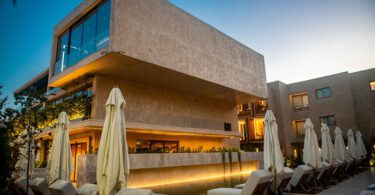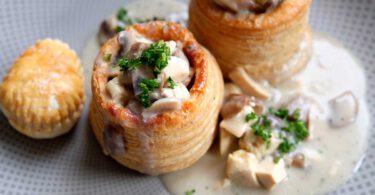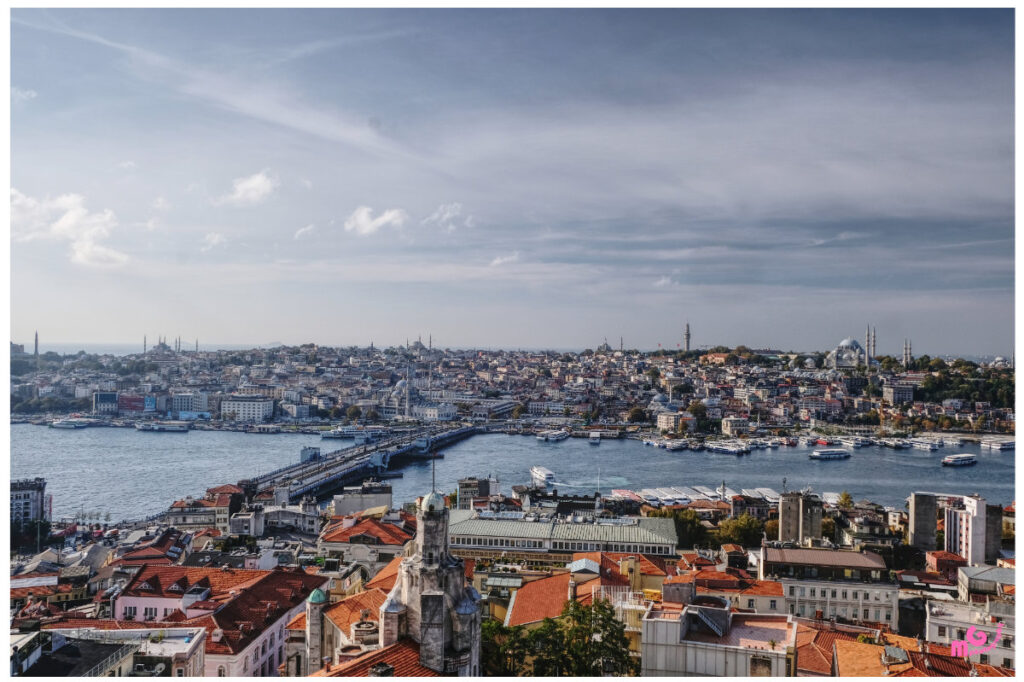
Chapter 1
The captain wishes us a pleasant flight, and after three relaxing hours we land in Istanbul. As we approach the huge metropolis, I wonder what adventures might be waiting for me there. As the plane touches down, the elegant tower immediately catches my attention – no wonder, after all, it was designed by the Italian design firm Pininfarina. It has the shape of a tulip.Istanbul Airport was built in a record time of only four and a half years and opened almost on time, something many other large projects can only dream of.
Long moving walkways lead to passport control, where hundreds of travellers are waiting to be checked out.
The process is quick, the face scan is passed and I reach the baggage carousel.
With my trolley I go to exit 13, where someone is waiting for me.
I have travelled to Turkey at the invitation of a large agency. Together with colleagues from all over the world, I am there to report on the Beyoğlu and Ankara Culture Route Festival.
Exhibitions, concerts, events of various kinds and culinary receptions will take place simultaneously in various cities and landscapes.
The costs, including flights, hotel stays and meals for this trip, are paid for by an agency.
Now the reader knows who he is facing.
It is difficult to raise funds for research. That is why I accept such offers.
One hand washes the other!
Colleagues who shout the term “whitewashing” into the journalistic clean room in this context are welcome to throw stones at me, I don’t mind. If I would be a political journalist, the facts would also be different.
In difficult times, I prefer to write about aesthetics, culinary arts, art and music to please myself and you, dear readers.
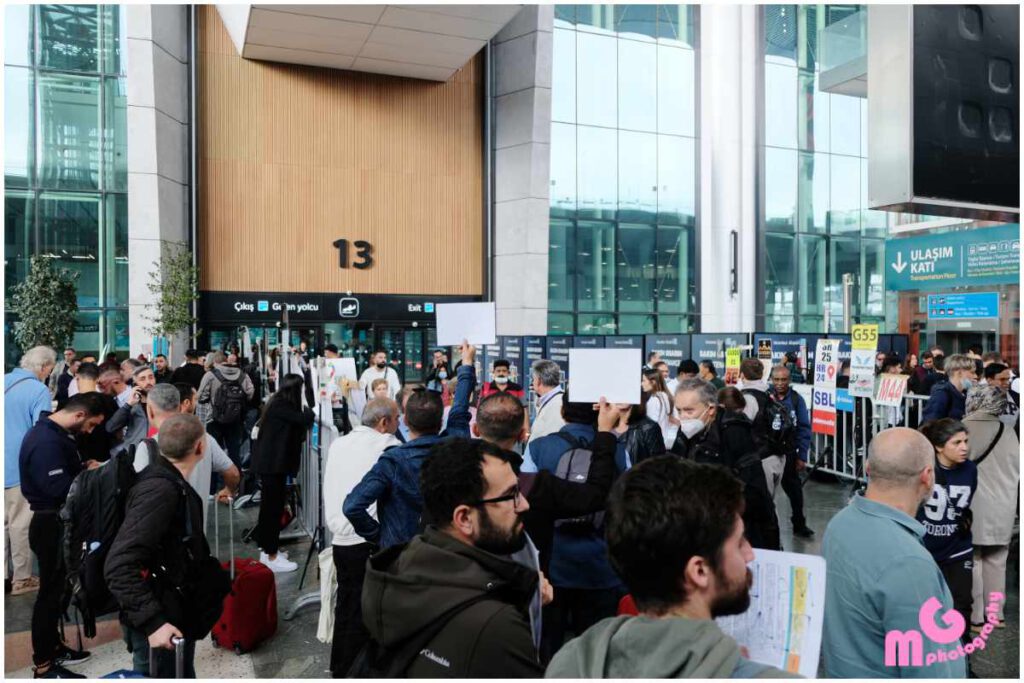
A medium-sized crowd gathers at the exit, the guides are waiting there for their guests. A mild breeze welcomes us.
Guides and guests gesticulate wildly and talk loudly. Displays are held in the air.
A refreshingly amusing chaos, I love it.
In the crowd I spot a young man holding up the logo of my agency, together we wait for a colleague. When he arrives, we load the luggage into the minibus and drive on the motorway towards Istanbul.

Istanbul
Suddenly, this wonderful city rises up in front of my eyes.
The journey takes us along minarets, magnificent buildings from the 19th century, the Beşiktaş football stadium in the middle, and again and again the view opens up to the sea, which today shines in a blue-silvery colour.
The evening sun casts a golden, airy silk blanket over the landscape.
Large and small ships cruise on the waters of the Bosporus.
The streets are full of people. And full of cars.
Unfortunately, there are far too many of them, which means that our arrival is delayed; this will happen again and again over the next few days. I will get used to it.
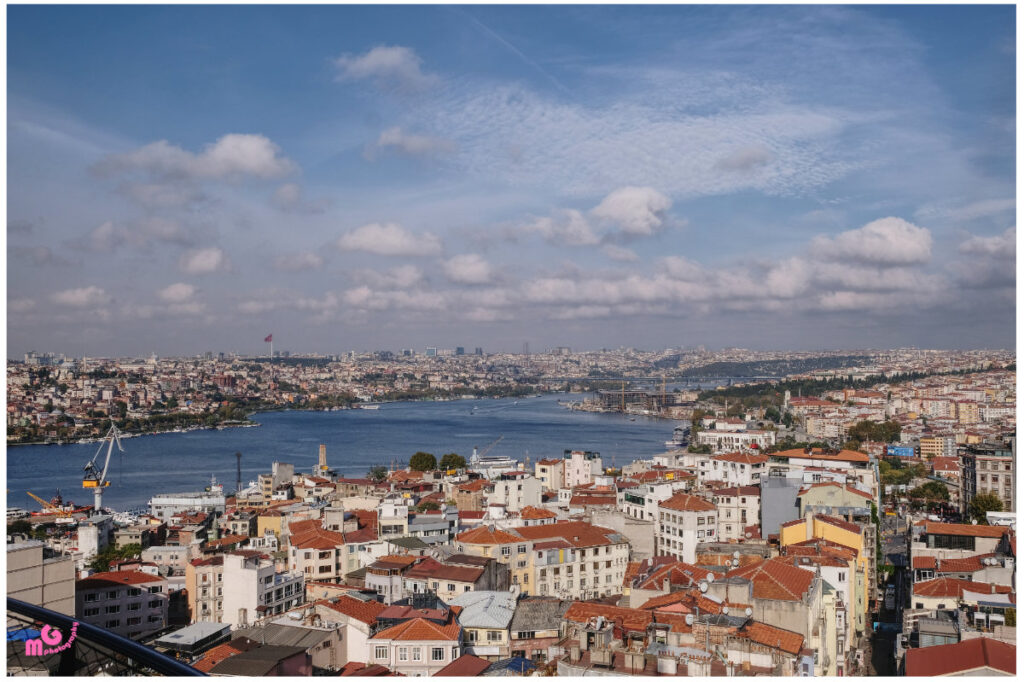
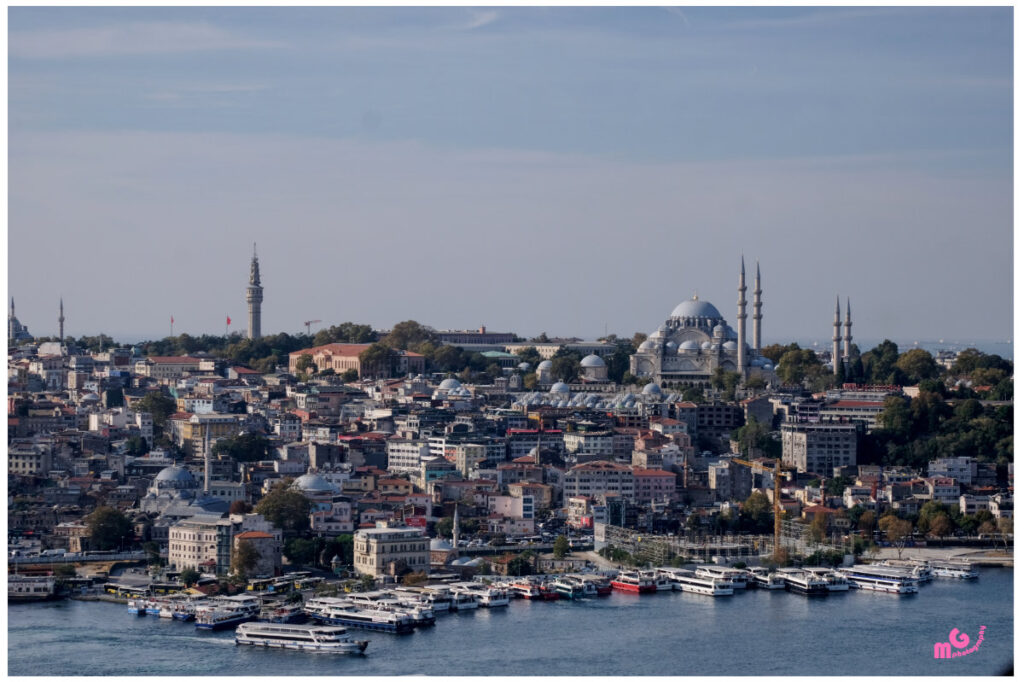
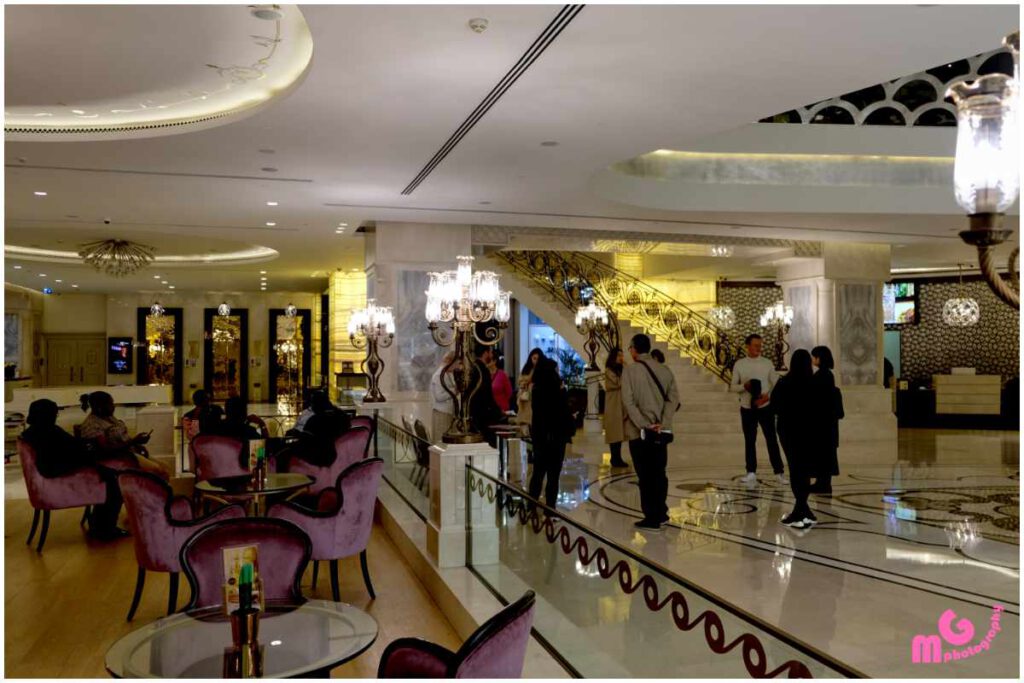
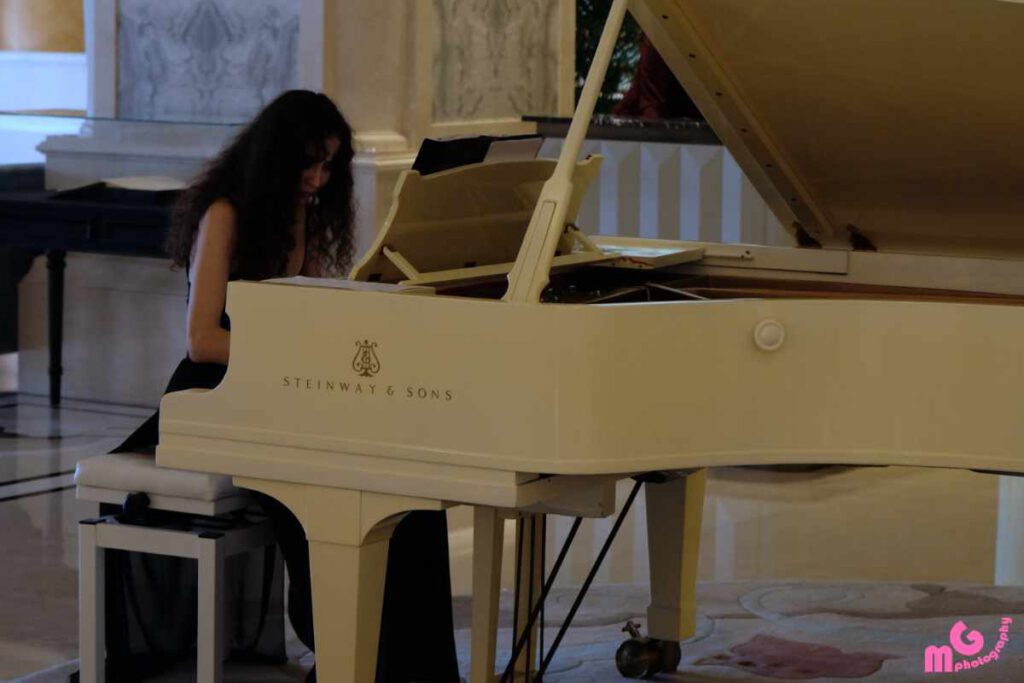
Nice to meet you…so happy to be here…I am so excited about this city…
We greet each other warmly, but a little anxiously, in the lobby of the hotel. Today, at dinnertime in Istanbul – not far from Taksim Square – a small, international society is meeting.
Japan, Azerbaijan, Romania, Moldova, Poland, Germany. An interesting mixture of nationalities that promises a lot of excitement for the next few days. Our friendly tour guide leads us straight to the bus, a delicious dinner in an excellent restaurant smiles at us, there the ice should break.
Mürver
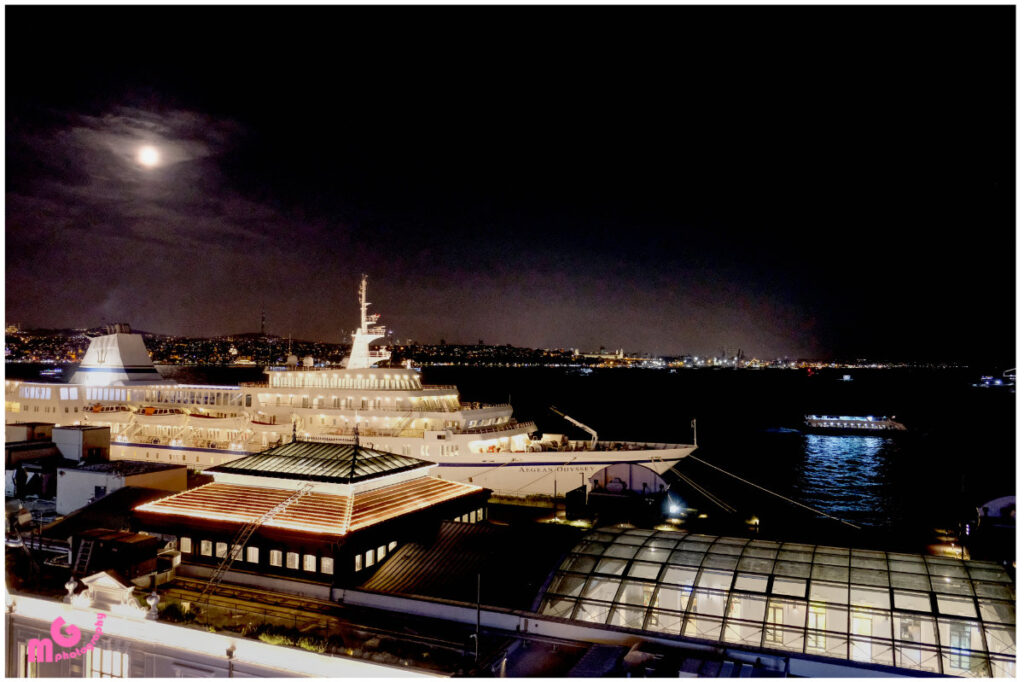
Virtuously the driver navigates the bus through the now nocturnal Istanbul, there is still a lot of traffic. Finally we reach the Mürver restaurant, very close to the newly built Galata Port in the Karaköy district.
The restaurant is on the roof top of the Novotel, from where you can enjoy a breathtaking view of the historic peninsula, the Topkapi Palace and, of course, the sea. At night, the lights of the yachts, ferries and cruise ships reflect on the dark sea, a magnificent image that makes you think of Istanbul’s history.
Already when the city was still called Constantinople, harbours were built on the coast to the Golden Horn and the Sea of Marmara to supply the city with goods. Even then, before about 1700 years, the Bosphorus was a much-travelled passage. Whoever controlled this waters also controlled the Black Sea and thereby secured power and wealth.









A very good meal awaits us. Almost all the dishes are prepared on the wood fire, I personally like the taste of smoke and glow, it is an art to handle it properly.
The aroma has to be carefully modelled. Today, the kitchen has mastered this virtuously.
As always, it depends on the right temperature and the right time. If one of these two factors is not correct, the entire creation is for nothing. Such cooking processes require a lot of experience. You have it here!
It’s only fair to anticipate: The restaurant made it into the new Michelin Istanbul the next day, bravo!
The open kitchen sends us various hot and cold hors d’oeuvres, accompanied by sourdough pita, olive oil and goat cheese of a very good quality.
The dishes are all very well seasoned, they have mastered the play of acidity, texture and the sensory.
Wafer-thin slices of courgette complement some fava beans quite excellently. For the main course, there is a choice between a lamb and a sea bass, both cooked on the fire.
The meat melts in your mouth, a very crispy, paper-thin crust makes for a refined mouthfeel.
Mürver Restaurant:
http://www.murverrestaurant.com/?lang=en
Galata

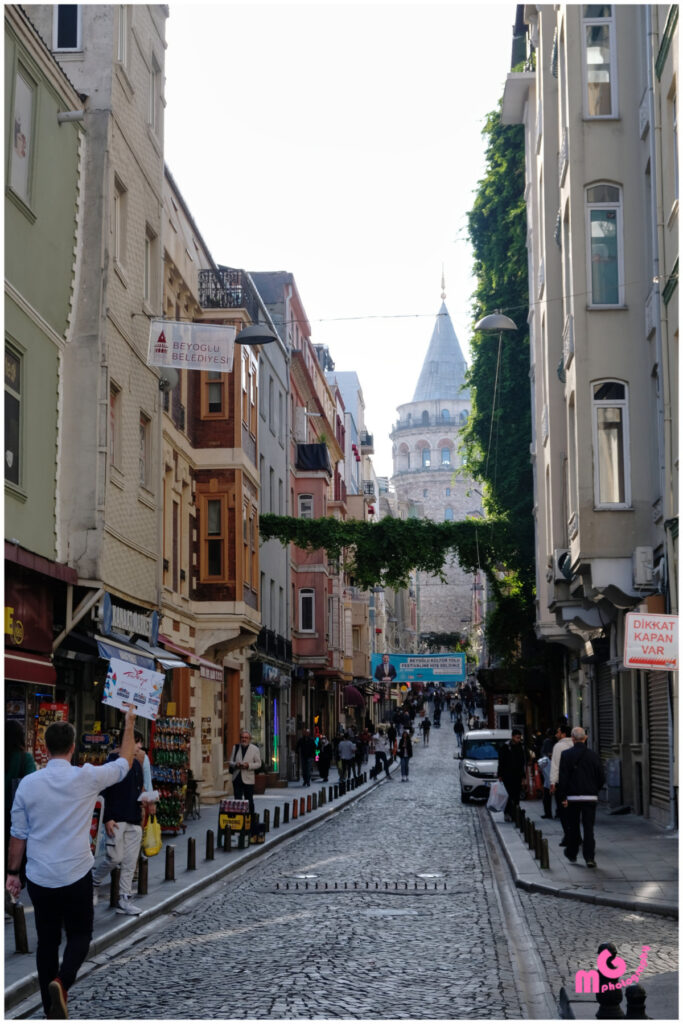

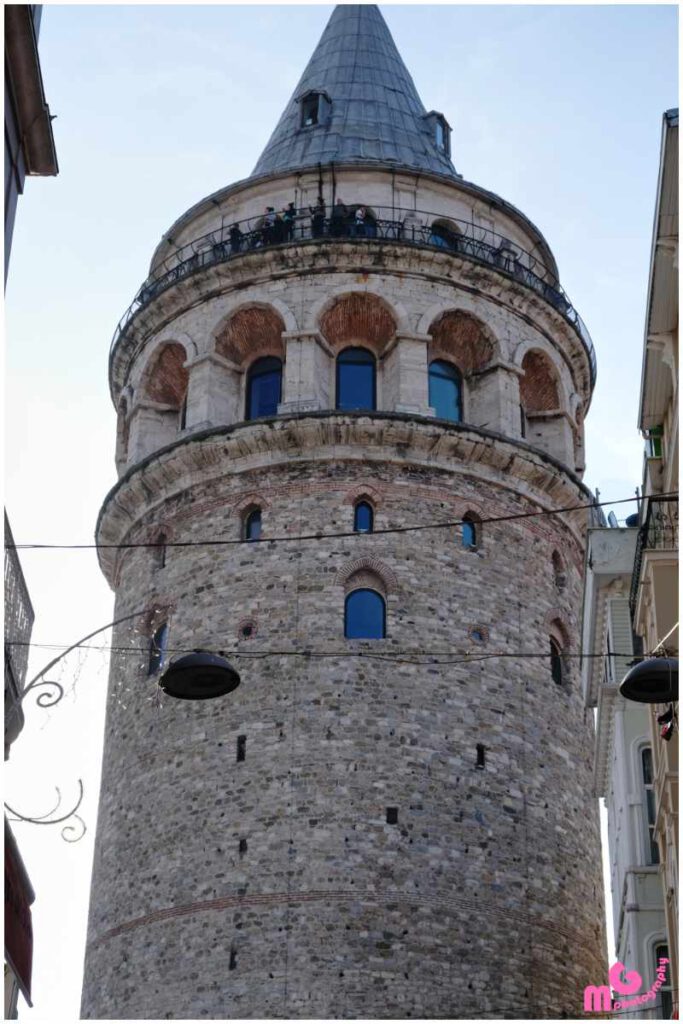
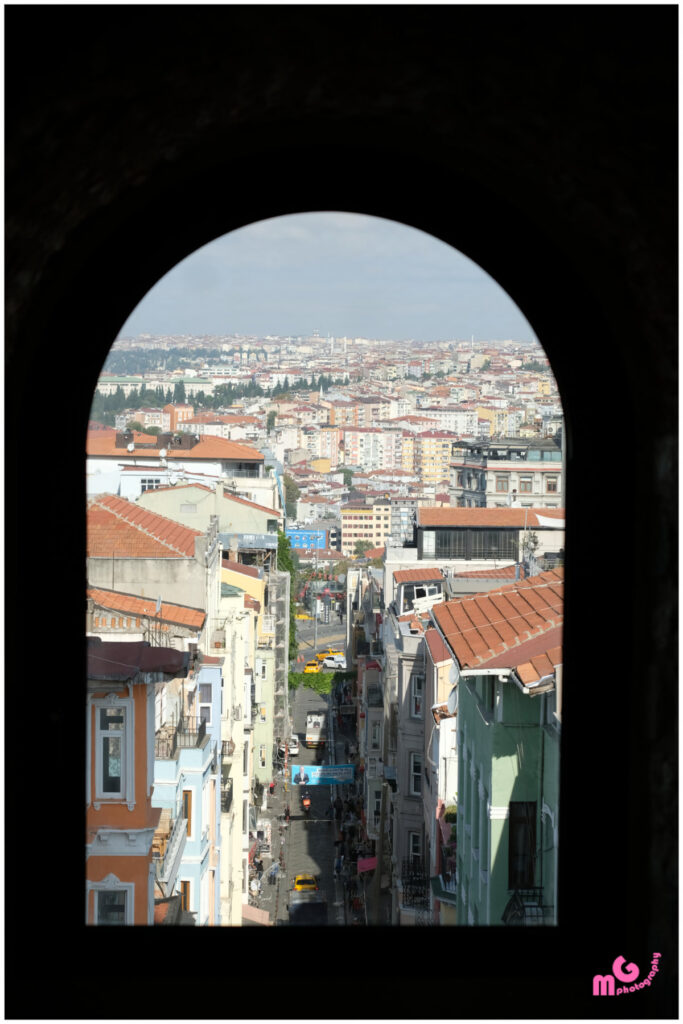
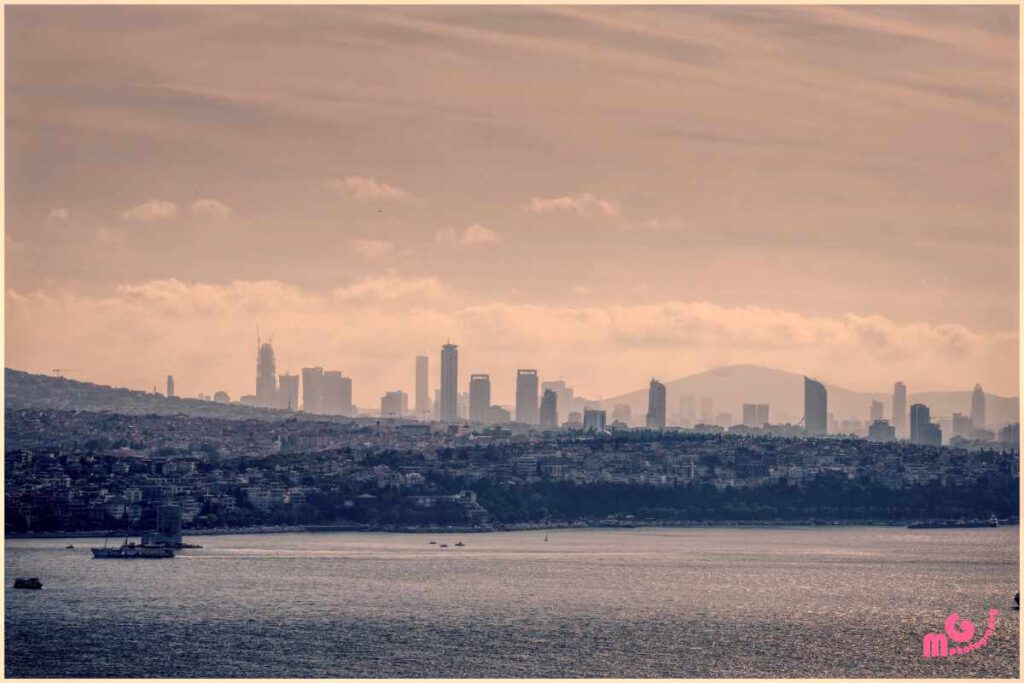
In the evening we pay tribute to Morpheus.
From my small suite, I only have to look out to the left and the Bosphorus shows its most beautiful side! This magnificent panorama always releases bound energy in me during these days.
The next morning is no exception.
A look at the programme promises an exciting day.
A visit to the Galata Tower, followed by some exhibitions including a biennial in the Pera Museum.
Lunch is at the Muutto restaurant in the trendy Galata Port.
The highlight of the day is the awarding of the first Michelin stars to Istanbul restaurants in the evening.
Our guide Yavuz takes us to Beyoğlu, a popular district in Istanbul. From there, we continue on foot in the light of the morning sun. The district used to be called Pera, which means “opposite” (of Constantinople). We walk along the former Grande Rue de Péra (today İstiklâl Caddesi, the Independence Street) and pass various embassies and luxury hotels.
Even at this hour, the many streets fill with life.
There are still some magnificent buildings in the French style, some of them pure Art Deco. Enterprising urban redevelopers have tried to restore some of these gems, often robbing many villas of their character in the process. Bad architects are the mortal enemy of aesthetics.
The Galata Tower dates back to the time of the Genoese, who built the structure in 1348. A little over 100 years later, the Ottomans took control. From there you can enjoy the best view of the city and the sea. I definitely recommend a visit to Istanbul tourists. It’s best to get there as early as possible, because long queues quickly form at the ticket counters.
We take the lift and walk to the viewing platform, where on this sunny morning the Bosphorus presents itself to us in all its beauty. There is a lot of photographing and filming. A radiantly beautiful morning.
Pera

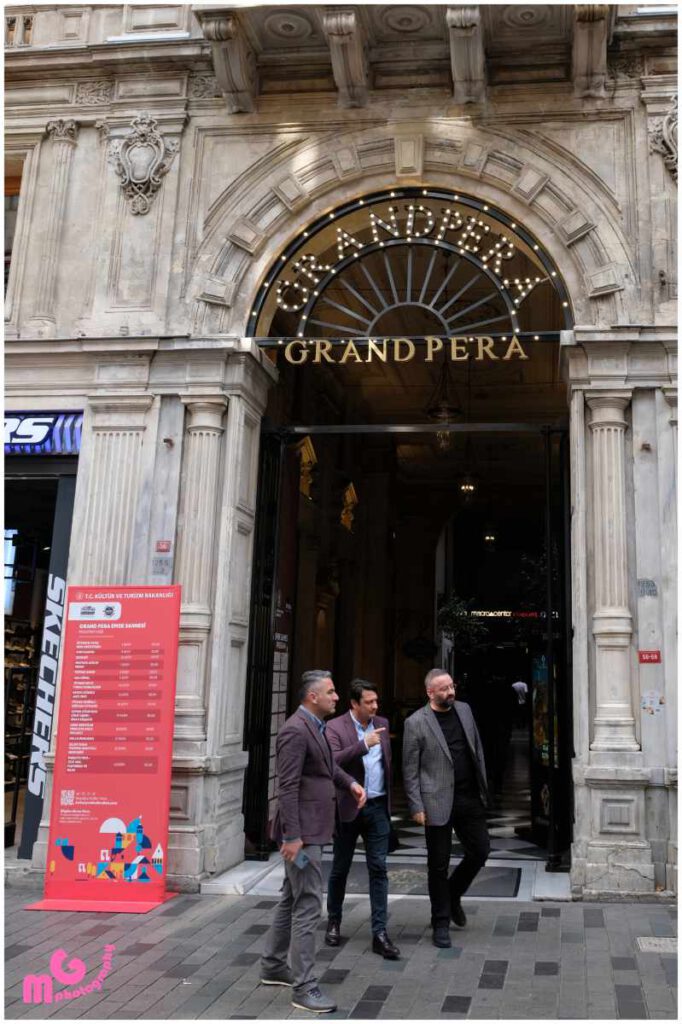
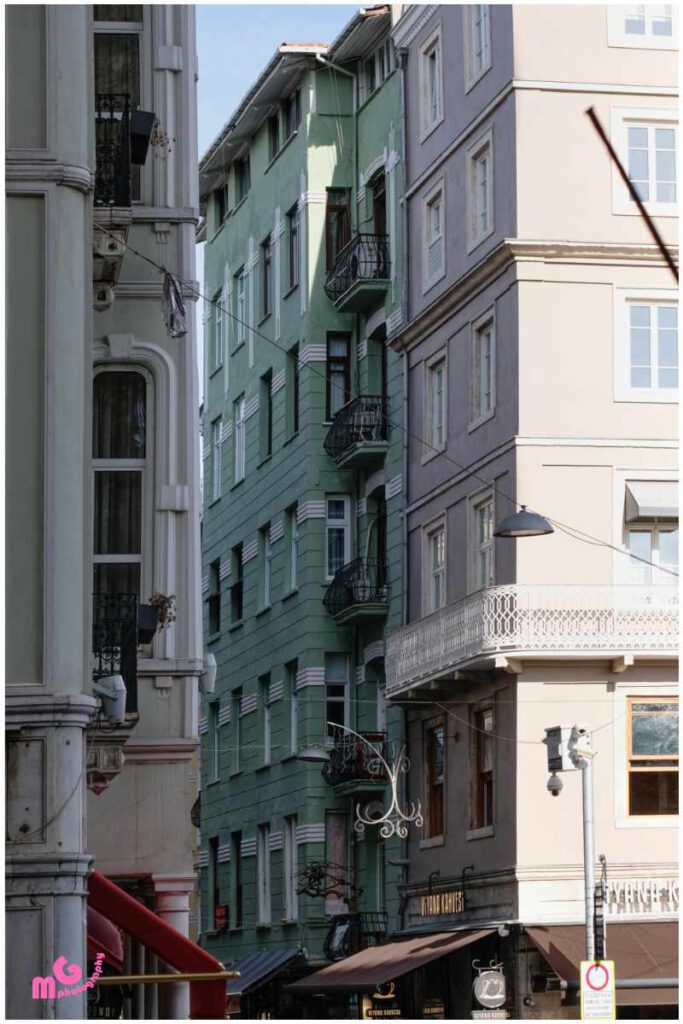
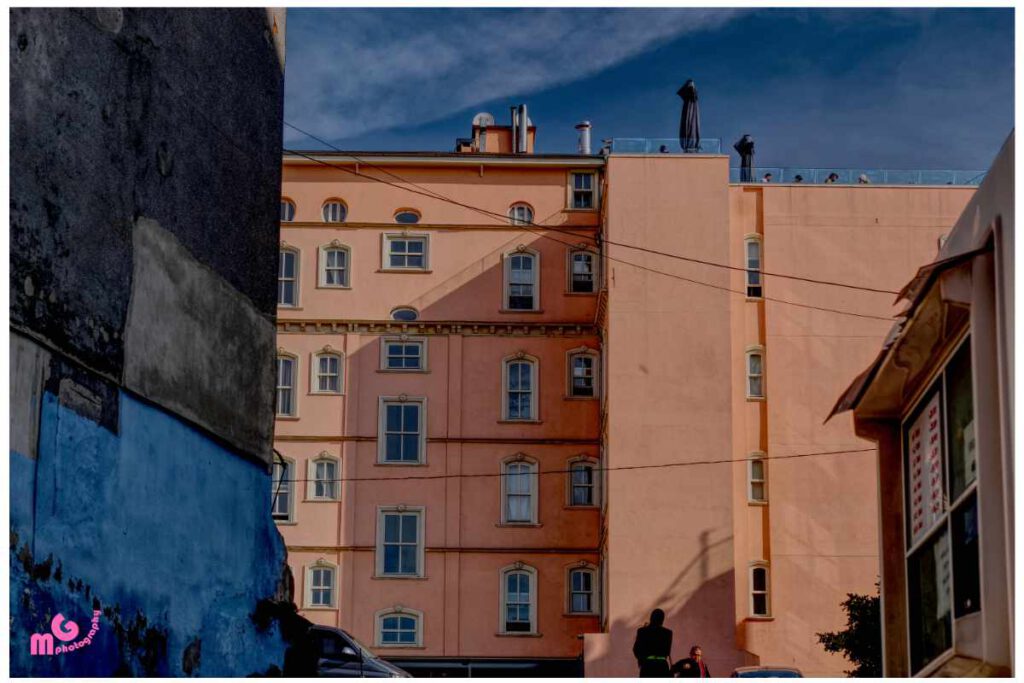

We make our way to the Pera Museum. The Pera Palace was opened in 1882 as a luxury hotel for guests arriving by Orient Express. A fin-de-siècle villa that somehow survived the decades between building mania, demolition and haphazardness. It had the second lift ever installed in Europe, only the Eiffel Tower had one before.
The dining room was in baroque style, and next to it was a lounge with a delicate glass dome through which the evening light gleamed dark blue when the gentlemen met for a cigar.
After the First World War, the Pera quarter was populated with spies, soldiers, prostitutes, writers, reporters, thieves, murderers, deserters and refugees.
Mustafa Kemal also moved into a room in the Palace in November 1918. The occupying powers were doing splendidly; quite a few representatives had made themselves immensely rich during the war, which they enjoyed to the full in Istanbul. The city was once again completely reinventing itself.
Mustafa Kemal knew that the Pera was the headquarters of the Allied occupation forces. There he contacted the British to find out to what extent they were prepared to make concessions.
At that time, he, later a popular hero and founder of modern Turkey, did not yet hold any office of power or influence, but it would not be long before his nationalist movement eliminated the last remnants of the Ottoman Empire and the Allied occupation.
Through the decades, the Pera and the surrounding establishments remained the meeting place for Istanbul’s hedonistic society, even under Mustafa Kemal Atatürk.
After the Second World War, jazz made its way into the lively metropolis. And European classical music, international ensembles came together, and the first ambitious orchestral projects were created in the city itself.
Two exhibitions are on the programme at the Pera.
- Intersecting Worlds: Ambassadors and Painters
- The Art of Weights and Measures
- Osman Hamdi Bey
I like the old masters, impressionism and contemporary painting, with Gerhard Richter at the top of my list of favourites. In my youth, I earned a nice extra income as a guide through Cologne’s Museum Ludwig.
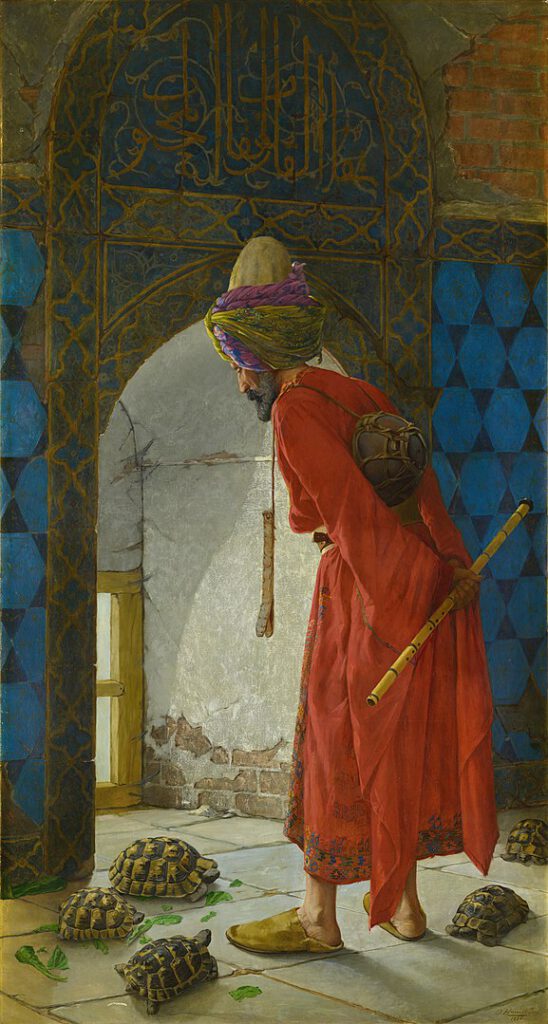
I am not convinced by the exhibition of Ottoman paintings. With one exception: Osman Hamdi Bey! The eldest son of the Grand Vizier Ibrahim Edhem Pasha studied law in Paris, while discovering his talent for painting and receiving lessons from Jean-Léon Gérôme, Louis Boulanger and Fausto Zonaro, a good school!
Particular symbolic power is attributed to his work “The Turtle Educator”. It was painted in 1906, when the Ottoman Empire was in the final stages of decadence.
According to historian Edhem Eldem, the image is interpreted differently in today’s Turkey depending on the political partisanship of the viewer: The Turkish traditionalist sees in it the beauty and dignity of the Ottoman Empire. For the new Kemalists, on the other hand, the picture shows that the turtles, i.e. the traditionalists, must be forced into modernity; for them, the picture is an “icon of standstill”. (Source: Wikipedia)
Link to Pera Museum
![[:de]Grandgourmand, Travel, Food, Lifestyle[:]](https://grandgourmand.de/wp-content/uploads/2023/01/logo_23_1-1.png)

